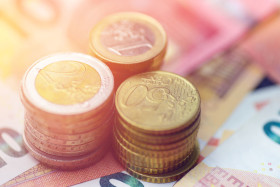The euro fell against safer currencies, like the Swiss franc and the Japanese yen, but gained on other most-traded rivals, including the US dollar, the Great Britain pound, and commodity currencies. Surprisingly, that did not include the New Zealand dollar, which turned out to be one of the strongest currencies during Friday’s trading session.
German factory orders were arguably the most important economic release in the eurozone today. According to data from Destatis (German Federal Statistical Office), factory orders climbed by 5.5% in January from the previous month on a seasonally adjusted basis — the biggest increase since July 2014. Analysts had predicted a much more modest increase of 1.5%. Year-on-year though, the indicator fell 1.4%.
Istat reported that Italian retail sales were flat in January on a seasonally adjusted basis, whereas traders were hoping for a 0.3% increase. On an annual basis, sales rose by 1.4%.
The euro managed to gain on the greenback despite strong US employment data. Experts speculated that the reasons for that were falling US Treasury yields and the outlook for additional interest rate cuts from the Federal Reserve following this week’s emergency rate cut. While the European Central Bank is also extremely dovish due to the coronavirus pandemic, specialists argued that the Fed has more room for monetary easing.
EUR/USD jumped from 1.1237 to 1.1305 as of 17:33 GMT today, reaching the high of 1.1355 intraday — the highest level since July 2019. EUR/GBP rose from 0.8674 to 0.8699. EUR/CHF fell from 1.0627 to 1.0595, and its session low of 1.0575 was the lowest since July 2015. EUR/NZD was at 1.7787 after opening at 1.7827 and falling to the daily minimum of 1.7680.
If you have any questions, comments, or opinions regarding the Euro, feel free to post them using the commentary form below.
Euro Gains on German Factory Orders, US Dollar’s Woes
